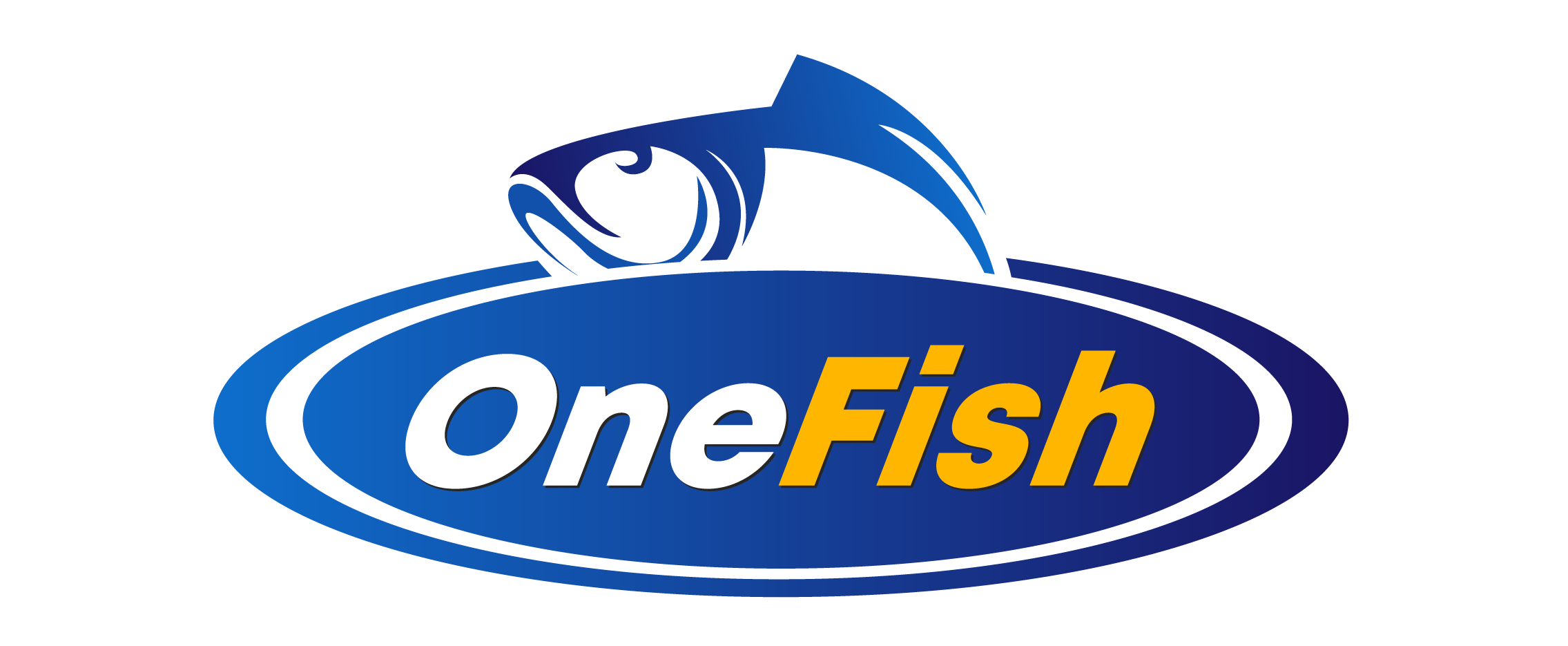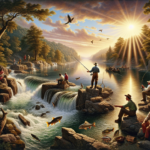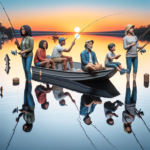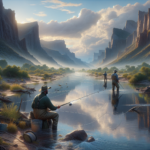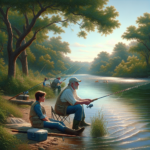Fishing in Lake Superior: Minnesota, Wisconsin, and Michigan’s Best Spots
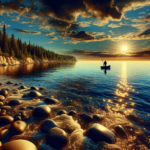
Introduction
Did you know that Lake Superior, the largest of the Great Lakes, holds 10% of the world’s fresh surface water? This vast expanse of water, shared by Minnesota, Wisconsin, and Michigan, offers some of the best fishing opportunities in North America. In this article, we will explore the top fishing spots in Lake Superior across these three states, delve into the best techniques and gear, and provide essential information on species, regulations, and seasonal considerations.
Whether you’re a seasoned angler or a novice looking to cast your first line, understanding where to fish, what to catch, and how to do it effectively can make all the difference. This guide aims to equip you with the knowledge you need to have a successful and enjoyable fishing experience on Lake Superior.
Background/Context
Historical or Cultural Significance
Lake Superior has a rich history intertwined with the indigenous peoples who have lived along its shores for thousands of years. The lake has been a vital resource for fishing, transportation, and trade. European settlers also recognized its importance, leading to the development of fishing industries that have thrived for centuries. Today, Lake Superior remains a cultural and economic cornerstone for the surrounding communities.
Geographical Overview
Lake Superior spans over 31,700 square miles, bordered by Minnesota to the west, Wisconsin to the south, and Michigan to the east. The lake’s cold, clear waters are home to a diverse ecosystem, including various fish species that attract anglers from around the world. The climate around Lake Superior can be harsh, with cold winters and cool summers, which significantly influence fishing conditions and species behavior.
Key Points/Details
Fishing Techniques
Technique Overview
Fishing in Lake Superior can be done using various techniques, including trolling, jigging, and fly fishing. Trolling is particularly popular for targeting larger species like lake trout and salmon, while jigging is effective for catching walleye and perch. Fly fishing can be rewarding in the lake’s tributaries, where brook trout and steelhead are abundant.
When and Where to Use
Trolling is best used in deeper waters during the summer months when fish are more active. Jigging is effective year-round but is particularly productive in the spring and fall. Fly fishing is ideal in the tributaries during the spring and fall runs of trout and salmon.
Recommended Gear
- Trolling: Medium to heavy rods, baitcasting reels, downriggers, and spoons or crankbaits.
- Jigging: Medium rods, spinning reels, jigs, and soft plastics.
- Fly Fishing: 7-9 weight rods, large arbor reels, and streamers or nymphs.
Species Information
Species Overview
Lake Superior is home to a variety of fish species, including lake trout, salmon, walleye, perch, brook trout, and steelhead. Each species has unique habits and preferred habitats, making them exciting targets for anglers.
Best Practices
- Lake Trout: Use trolling techniques with spoons or crankbaits in deep waters during summer.
- Salmon: Target during their spawning runs in the fall using trolling or fly fishing techniques.
- Walleye: Jigging with soft plastics or live bait in shallower waters during spring and fall.
- Brook Trout and Steelhead: Fly fishing in tributaries during spring and fall runs.
Location Information
Top Fishing Spots
- Minnesota: Duluth Harbor, Two Harbors, and the North Shore offer excellent fishing for lake trout and salmon.
- Wisconsin: Apostle Islands, Chequamegon Bay, and the Brule River are prime spots for a variety of species.
- Michigan: Keweenaw Peninsula, Marquette, and Munising are known for their productive waters and diverse fish populations.
Regulations and Licenses
Each state has its own fishing regulations and license requirements. Anglers should check the respective state’s Department of Natural Resources (DNR) website for up-to-date information on licenses, catch limits, and seasonal restrictions.
Seasonal Considerations
Seasonal Variations
Fishing conditions on Lake Superior change dramatically with the seasons. In winter, ice fishing becomes popular, particularly for species like walleye and perch. Spring and fall are prime times for targeting trout and salmon during their spawning runs. Summer offers the best conditions for trolling in deeper waters.
Best Times to Fish
The optimal times to fish vary by species and technique. Early morning and late evening are generally the best times to fish, as many species are more active during these periods. Seasonal peaks include spring and fall for trout and salmon, and summer for lake trout and walleye.
Events and Tournaments
Event Overview
Lake Superior hosts several fishing events and tournaments throughout the year. Notable events include the Lake Superior Salmon Classic in Minnesota, the Apostle Islands Fishing Tournament in Wisconsin, and the Keweenaw Bay Classic in Michigan.
Preparation Tips
- Ensure your gear is in top condition and suited for the species targeted in the tournament.
- Practice in the tournament area to familiarize yourself with local conditions.
- Stay updated on tournament rules and regulations to avoid disqualification.
Tips and Best Practices
General Tips
- Always check the weather forecast before heading out.
- Use local bait and lures that mimic the natural prey of the target species.
- Keep a fishing log to track successful techniques and locations.
Avoid Common Mistakes
- Not checking local regulations can lead to fines or penalties.
- Using the wrong gear for the target species can result in lost fish.
- Ignoring seasonal patterns can lead to unproductive fishing trips.
Advanced Techniques
- Use sonar and GPS to locate fish and structure more effectively.
- Experiment with different trolling speeds and depths to find the most productive zones.
- Master the art of fly fishing for a more challenging and rewarding experience.
Gear and Equipment Recommendations
Essential Gear
- Rods and reels suited for the target species and techniques.
- Quality fishing line, appropriate for the conditions and species.
- A variety of lures and baits to match local prey.
- Safety equipment, including life jackets and first aid kits.
Optional Gear/Upgrades
- Fish finders and GPS units for better navigation and fish location.
- Downriggers for more effective trolling.
- High-quality polarized sunglasses to reduce glare and see fish more clearly.
Where to Buy or Rent
Local bait and tackle shops in Duluth, Bayfield, and Marquette offer a wide range of gear and equipment. Online retailers like Bass Pro Shops and Cabela’s also provide extensive selections for all your fishing needs.
Safety and Conservation
Safety Tips
- Always wear a life jacket when on the water.
- Be aware of weather conditions and avoid fishing during storms.
- Inform someone of your fishing plans and expected return time.
Conservation Practices
- Practice catch and release to help maintain fish populations.
- Respect local wildlife and habitats by minimizing your impact.
- Follow all fishing regulations and guidelines to ensure sustainable fishing practices.
Planning Your Trip
Accommodations
There are numerous lodging options near Lake Superior, ranging from campgrounds and cabins to hotels and resorts. Popular choices include the Bluefin Bay Family of Resorts in Minnesota, the Old Rittenhouse Inn in Wisconsin, and the Landmark Inn in Michigan.
Travel Tips
- Plan your route in advance and check for any road closures or construction.
- Consider renting a boat if you don’t have one, as many prime fishing spots are best accessed by water.
- Pack appropriately for the weather, as conditions can change rapidly around Lake Superior.
Additional Activities
In addition to fishing, the Lake Superior region offers a variety of activities, including hiking, kayaking, and exploring local towns and cultural sites. This makes it an excellent destination for families or groups with diverse interests.
Frequently Asked Questions (FAQs)
What is the best time of year to fish in Lake Superior?
The best time to fish varies by species, but generally, spring and fall are ideal for trout and salmon, while summer is best for lake trout and walleye.
Do I need a special license to fish in Lake Superior?
Yes, you need a fishing license from the state you are fishing in (Minnesota, Wisconsin, or Michigan). Check the respective state’s DNR website for specific requirements.
Can I fish from the shore, or do I need a boat?
You can fish from the shore in many areas, but having a boat allows you to access deeper waters and more productive fishing spots.
What safety precautions should I take when fishing on Lake Superior?
Always wear a life jacket, check the weather forecast, inform someone of your plans, and carry safety equipment like a first aid kit and a VHF radio.
Conclusion
Fishing in Lake Superior offers a unique and rewarding experience, with diverse species and stunning natural beauty. By understanding the best techniques, gear, and locations, you can maximize your chances of a successful trip. Remember to follow local regulations, practice conservation, and prioritize safety to ensure a positive experience for yourself and future generations of anglers. So grab your gear, head to one of the top fishing spots in Minnesota, Wisconsin, or Michigan, and enjoy the incredible fishing opportunities that Lake Superior has to offer.
